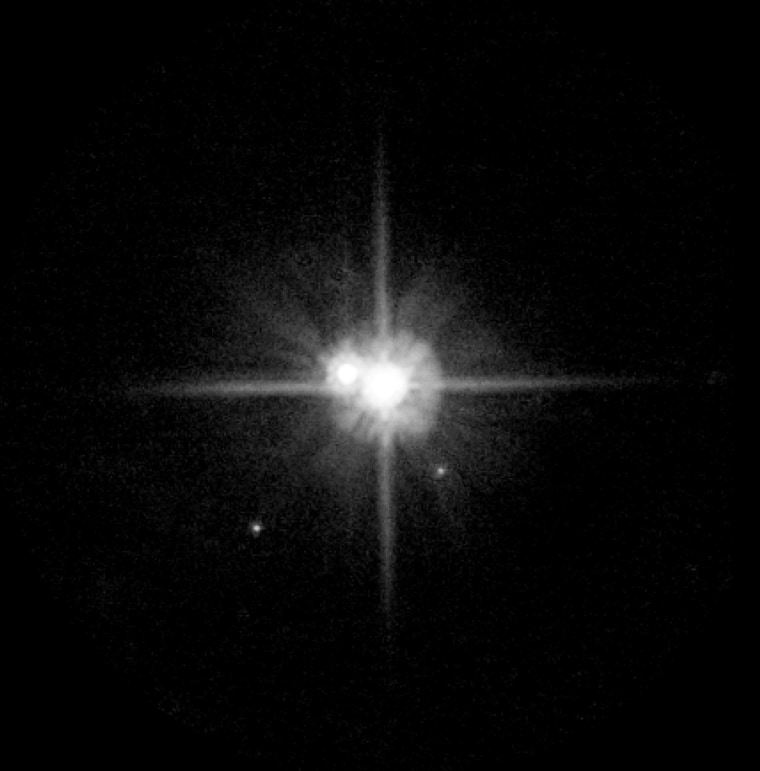The International Astronomical Union has officially christened Pluto's two newest moons Nix and Hydra.
The tiny satellites were discovered by the Hubble Space Telescope last May and are believed to have been formed from the same giant impact that carved out Charon, Pluto's larger satellite, discovered in 1978.
The names were proposed this spring by the team that discovered the satellites. Before the satellites received their official names, they were called P1 and P2.
In Greek mythology, Nyx was the goddess of the night and the mother of Charon, the boatsman who ferried souls across the River Styx into the underworld ruled by Pluto. The IAU changed the spelling to "Nix" after the Egyptian spelling of the goddess, to avoid confusion with two asteroids that had already been named "Nyx."
The outermost of Pluto's two new satellites is named after Hydra, the nine-headed mythological serpent that guarded Pluto's realm.
"We thought it was an appropriately scary image to be the guard at the gate," said Alan Stern, an astronomer at the Southwest Research Institute in Arizona who led the team that initially discovered the satellites
In addition to their relation to Pluto, the names were chosen because their first initials, "N" and "H," are also the first letters of New Horizons, the NASA spacecraft launched in January towards the Pluto system. The Hubble Space Telescope was providing support for the New Horizons mission when it spotted the tiny satellites.
"The 'P' and the 'L' in Pluto are in honor of the Percival Lowell, who instigated the search that resulted in the discovery of Pluto," Stern told Space.com. "The 'N' and the 'H' are exactly parallel to honor New Horizons which instigated the search that led us to [the new satellites]."
Stern said that the team also considered the name "Cerberus," the three-headed hound who also guarded the gates to Hades, but rejected it because many people associate Pluto with the Disney cartoon character, and having one object in the system associated with a dog was enough.
The new names were reported Tuesday on ScienceNow, a publication of the American Association for the Advancement of Science. A formal announcement will be issued Friday.
